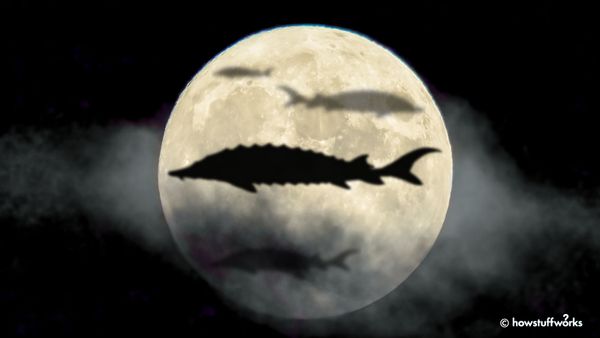Moon Phases
Every night, the moon shows a different face in the night sky. On some nights we can see its entire face, sometimes it's partial, and on others it isn't visible at all. These phases of the moon aren't random — they change throughout the month in a regular and predictable way.
As the moon travels in its 29-day orbit, its position changes daily. Sometimes it's between the Earth and the sun and sometimes it's behind us. So a different section of the moon's face is lit up by the sun, causing it to show different phases.
Advertisement
Over the billions of years of the moon's existence, it has moved farther away from the Earth, and its rate of rotation has also slowed. The moon is tidally locked with the Earth, which means that the Earth's gravity "drags" the moon to rotate on its axis. This is why the moon rotates only once per month and why the same side of the moon always faces the Earth.
The moon has eight phases in each lunar cycle: four primary phases and four secondary phases. The four primary phases are:
- new moon
- first quarter
- full moon
- third quarter
These occur at a specific time each month, and you can check the exact time to see if the moon will be risen and visible in your location as it reaches that phase.
The four secondary phases are not at a specific time; they are transitions that the moon goes through between the primary phases. For instance, the moon may stay in one of these phases for seven days. They are:
- waxing crescent
- waxing gibbous
- waning gibbous
- waning crescent
"Waxing" means the illuminated part of the moon is growing and "waning" means the illuminated part is shrinking. The "crescent" moon is also a familiar concept, as the moon appears in the shape of a crescent during this time. Perhaps the most novel term in the lunar calendar is "gibbous," which broadly means convex, but in astronomy specifically refers to the time when the moon is more than half but not wholly illuminated.
The eight phases in order are: new moon, waxing crescent, first quarter, waxing gibbous, full moon, waning gibbous, third quarter and waning crescent. For more details, see our article on moon phases.
Tides
Every day, the Earth experiences tides, or changes in the level of its oceans. They're caused by the pull of the moon's gravity. There are two high tides and two low tides every day, each lasting about six hours.

The moon's gravitational force pulls on water in the oceans and stretches the water out to form tidal bulges in the ocean on the sides of the planet that are in line with the moon. The moon pulls water on the side nearest it, which causes a bulge toward the moon. The moon pulls on the Earth slightly, which drags the Earth away from the water on the opposite side, making another tidal bulge there. So, the areas of the Earth under the bulge experience high tide, while the areas on the thin sides have low tide. As the Earth rotates underneath the elongated bulges, this creates high and low tides about 12 hours apart.
The moon also stabilizes the Earth's rotation. As the Earth spins on its axis, it wobbles. The moon's gravitational effect limits the Chandler wobble to a small degree. If we had no moon, the Earth might move almost 90 degrees off its axis, with the same motion that a spinning top has as it slows down.



